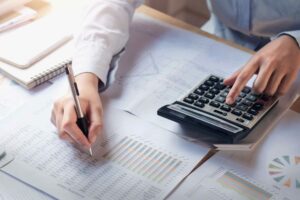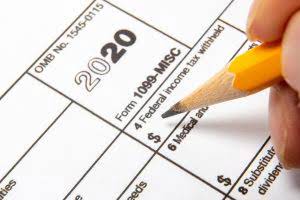
It is difficult to determine an accurate fair value for long-lived assets. This is one reason US GAAP has not permitted the fair valuing of long-lived assets. The thought process behind the adjustments to fair value under IFRS is that fair value more accurately represents true value. Even if the fair value reported is not known with certainty, reporting the class of assets at a reasonable representation of fair value enhances decision-making by users of the financial statements. He estimates that he can use this machine for five years or 100,000 presses, and that the machine will only be worth $1,000 at the end of its life. He also estimates that he will make 20,000 clothing items in year one and 30,000 clothing items in year two.
- The IRS may audit businesses to ensure that they are complying with the guidelines for calculating depreciation and recording depreciation expenses.
- This will reduce the value of the asset and update its carrying amount.
- Productslike machineries, printers, furniture used in an organization all has its own depreciationover the periods of its usage and hence is recorded as expense in the income statement ofthe year.
- This may include wiring, switches, sockets, light fittings, fans, and other electrical fittings.
- The depreciation journal entry significantly impacts a business’s financial statements, affecting both the income statement and the balance sheet.
This amount should be based on the estimated useful life of the asset. The second step is to credit the accumulated depreciation account for the same amount. This will reduce the value how to record depreciation journal entry of the asset and update its carrying amount. The accounting practice of allocating the cost of a tangible asset over its useful life is known as a depreciation journal entry.
Understanding Journal Entries
Alternatively, you can use a depreciation worksheet to have a formal document. This worksheet is a supporting document that vouches for the depreciation journal entry. However, preparing a depreciation worksheet is an optional step; you can still compute depreciation without this worksheet. The total annual depreciation expense should be $670 ($110 + $120 + $100 + $40 + $300).

Likewise, depreciation expense represents the cost that incurs during the period as the company uses the asset in the business. Hence, the company needs to make proper journal entry for the depreciation expense at the period-end adjusting entry. A daily summary is used for tracking business cash flow in the books, and represents a report or record that provides a snapshot of a business’s financial transactions for a given day. It is a tool used by high-transaction volume businesses to monitor their daily inflows and outflows of cash.
Straight Line Depreciation Journal Entry
Journal entries are like the diary of a business, recording every money move it makes. Let’s explore how this diary keeps track of everything, from buying pencils to paying for a website. Depreciation is recorded by debiting Depreciation Expense and crediting Accumulated Depreciation. This is recorded at the end of the period (usually, at the end of every month, quarter, or year). For example, ABC Company acquired a delivery van for $40,000 at the beginning of 2018.
However, the total amount of depreciation taken over an asset’s economic life will still be the same. In our example, the total depreciation will be $48,000, even though the sum-of-the-years-digits method could take only two or three years or possibly six or seven years to be allocated. One unique feature of the double-declining-balance method is that in the first year, the estimated salvage value is not subtracted from the total asset cost before calculating the first year’s depreciation expense. However, depreciation expense is not permitted to take the book value below the estimated salvage value, as demonstrated in the following text. Straight-line depreciation is efficient, accounting for assets used consistently over their lifetime, but what about assets that are used with less regularity? The units-of-production depreciation method bases depreciation on the actual usage of the asset, which is more appropriate when an asset’s life is a function of usage instead of time.
